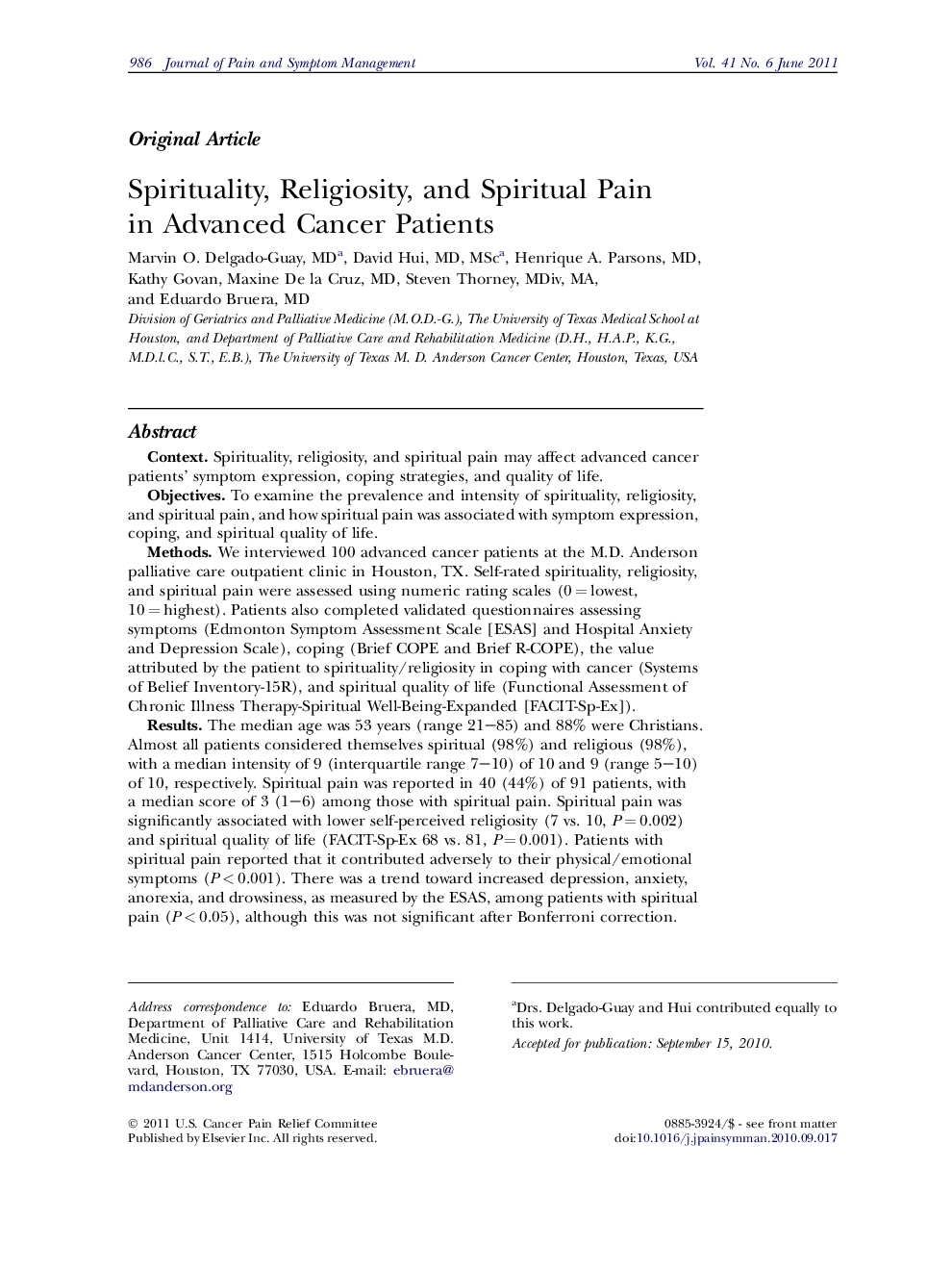| کد مقاله | کد نشریه | سال انتشار | مقاله انگلیسی | نسخه تمام متن |
|---|---|---|---|---|
| 2724442 | 1146151 | 2011 | 9 صفحه PDF | دانلود رایگان |

ContextSpirituality, religiosity, and spiritual pain may affect advanced cancer patients’ symptom expression, coping strategies, and quality of life.ObjectivesTo examine the prevalence and intensity of spirituality, religiosity, and spiritual pain, and how spiritual pain was associated with symptom expression, coping, and spiritual quality of life.MethodsWe interviewed 100 advanced cancer patients at the M.D. Anderson palliative care outpatient clinic in Houston, TX. Self-rated spirituality, religiosity, and spiritual pain were assessed using numeric rating scales (0 = lowest, 10 = highest). Patients also completed validated questionnaires assessing symptoms (Edmonton Symptom Assessment Scale [ESAS] and Hospital Anxiety and Depression Scale), coping (Brief COPE and Brief R-COPE), the value attributed by the patient to spirituality/religiosity in coping with cancer (Systems of Belief Inventory-15R), and spiritual quality of life (Functional Assessment of Chronic Illness Therapy-Spiritual Well-Being-Expanded [FACIT-Sp-Ex]).ResultsThe median age was 53 years (range 21–85) and 88% were Christians. Almost all patients considered themselves spiritual (98%) and religious (98%), with a median intensity of 9 (interquartile range 7–10) of 10 and 9 (range 5–10) of 10, respectively. Spiritual pain was reported in 40 (44%) of 91 patients, with a median score of 3 (1–6) among those with spiritual pain. Spiritual pain was significantly associated with lower self-perceived religiosity (7 vs. 10, P = 0.002) and spiritual quality of life (FACIT-Sp-Ex 68 vs. 81, P = 0.001). Patients with spiritual pain reported that it contributed adversely to their physical/emotional symptoms (P < 0.001). There was a trend toward increased depression, anxiety, anorexia, and drowsiness, as measured by the ESAS, among patients with spiritual pain (P < 0.05), although this was not significant after Bonferroni correction.ConclusionA vast majority of advanced cancer patients receiving palliative care considered themselves spiritual and religious. Spiritual pain was common and was associated with lower self-perceived religiosity and spiritual quality of life.
Journal: Journal of Pain and Symptom Management - Volume 41, Issue 6, June 2011, Pages 986–994